Sailors saved from inflatable craft after cookie cutter shark frenzy
Three sailors were rescued off the coast of Queensland after they found themselves in deep water when their blow-up boat was set upon and savaged by a school of miniature sharks
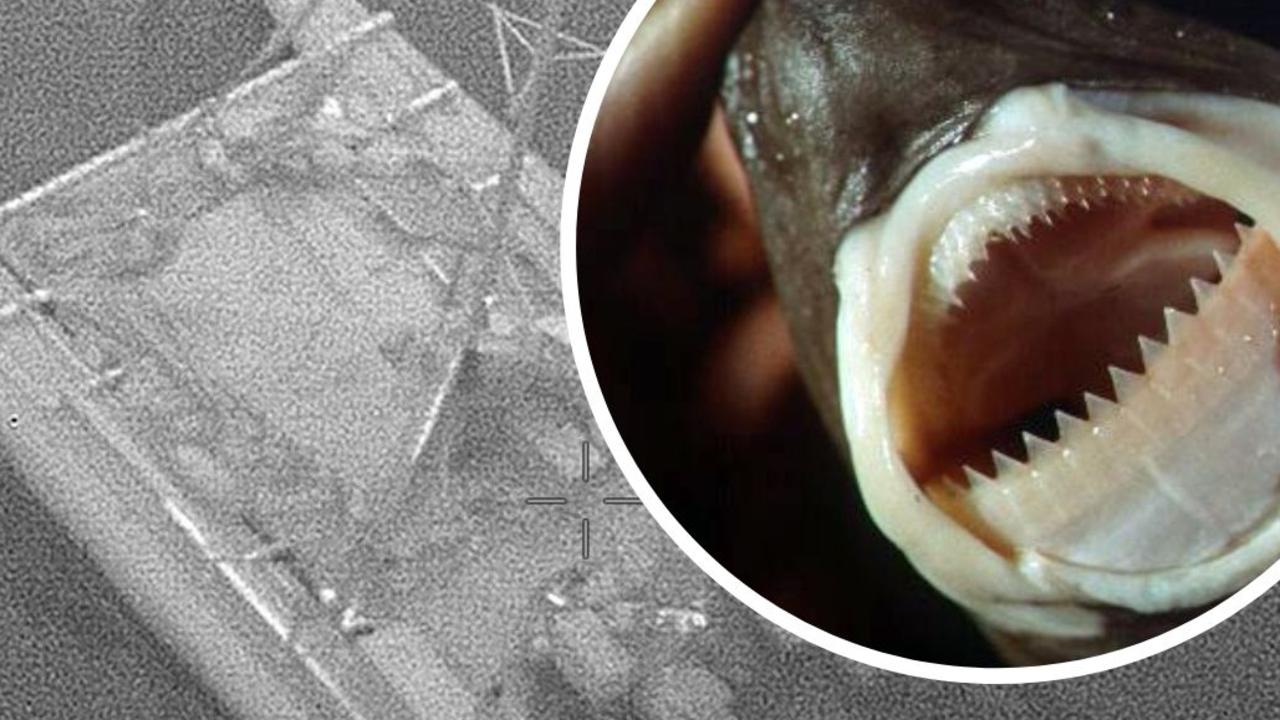
READING LEVEL: GREEN
Three men rescued from their badly damaged boat this week were attacked by a school of very small sharks.
The sailors’ inflatable* catamaran*, the Tion, was detected* by the Australian Maritime* Safety Authority (AMSA) after the crew’s emergency beacon* was set off.
Evgeny Kovalevsky, Vincent Baugé and captain Stanislav Berezkin told 9 News of the terrifying moment they realised their vessel was under attack.
“We actually (didn’t) feel the (first) bump because our weight was two tonnes,” Mr Kovalevsky said. “That shark (species) is very small.”
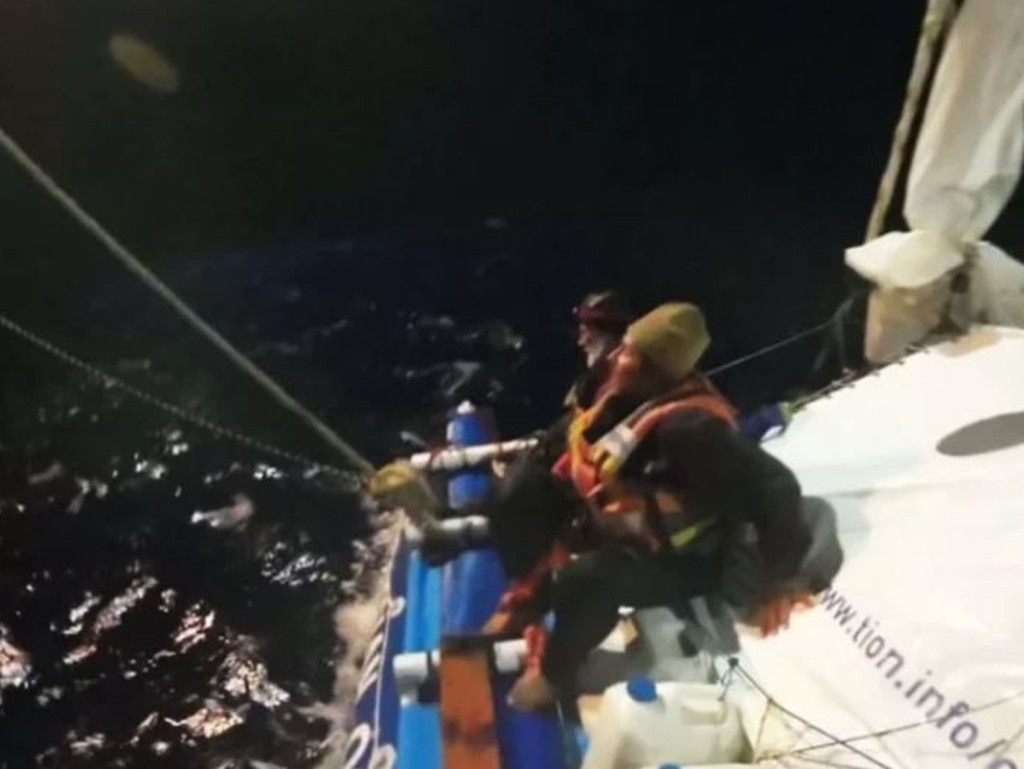
Despite the tiny size of the sharks, the men found the craft was deflating* and they were quickly in “trouble”.
“They attacked our backside, and because we have a rudder* system on our backside, the rudder system (was) destroyed very quickly,” Mr Kovalevsky said. “It’s not death but it was big trouble.”
During the attack, both hulls* of the vessel were damaged.
AMSA responded to the crew’s emergency beacon, directing a large carrier named Dugong Ace to rescue the Frenchman and two Russians. The Dugong Ace was 30 nautical* miles away and diverted course to help the men, who were about 835 km southeast of Cairns.
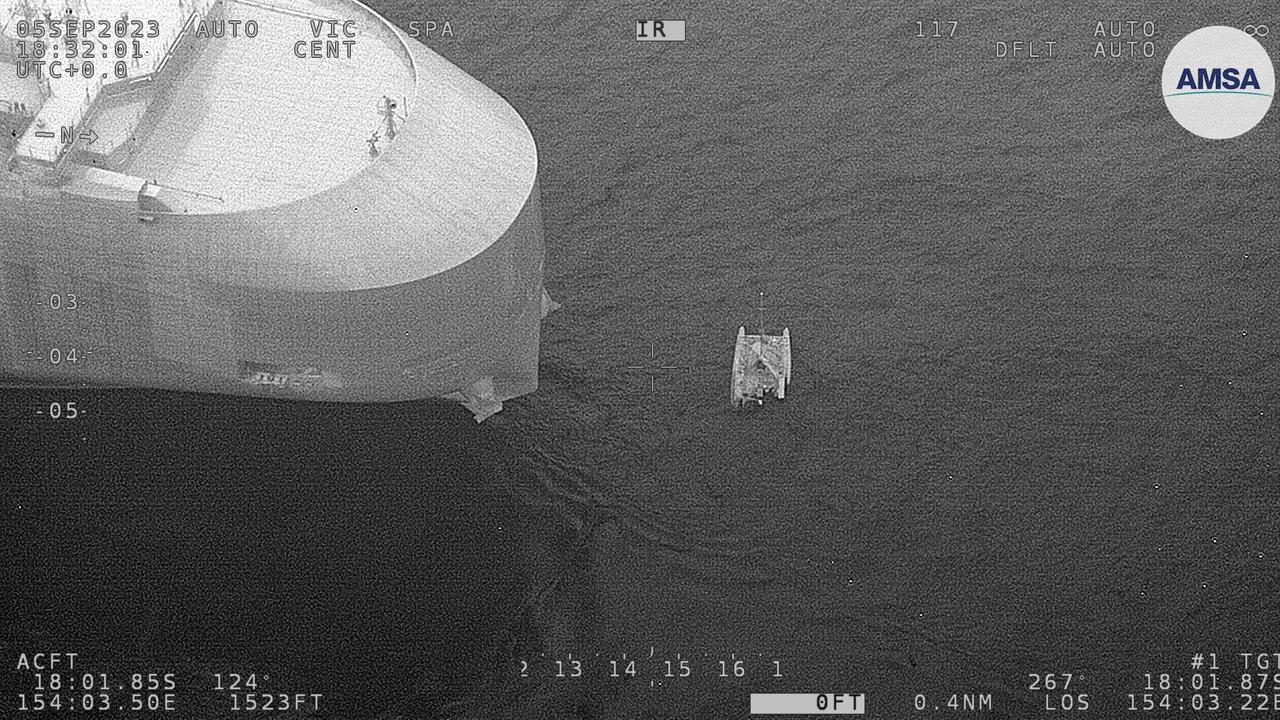
Mr Kovalevsky told 9 News that he heard plenty about “crocodiles, alligators and kangaroo(s)” in Australia but not sharks.
The sailor confirmed that despite the “catastrophe*” he and his crew would continue their mission to circle the globe in an inflatable vessel, a journey first completed by Russians 220 years ago.
“Our destiny* is very important,” he said. “This is history. My wife told me, ‘Go home’, I told her, ‘No, we continue’.”
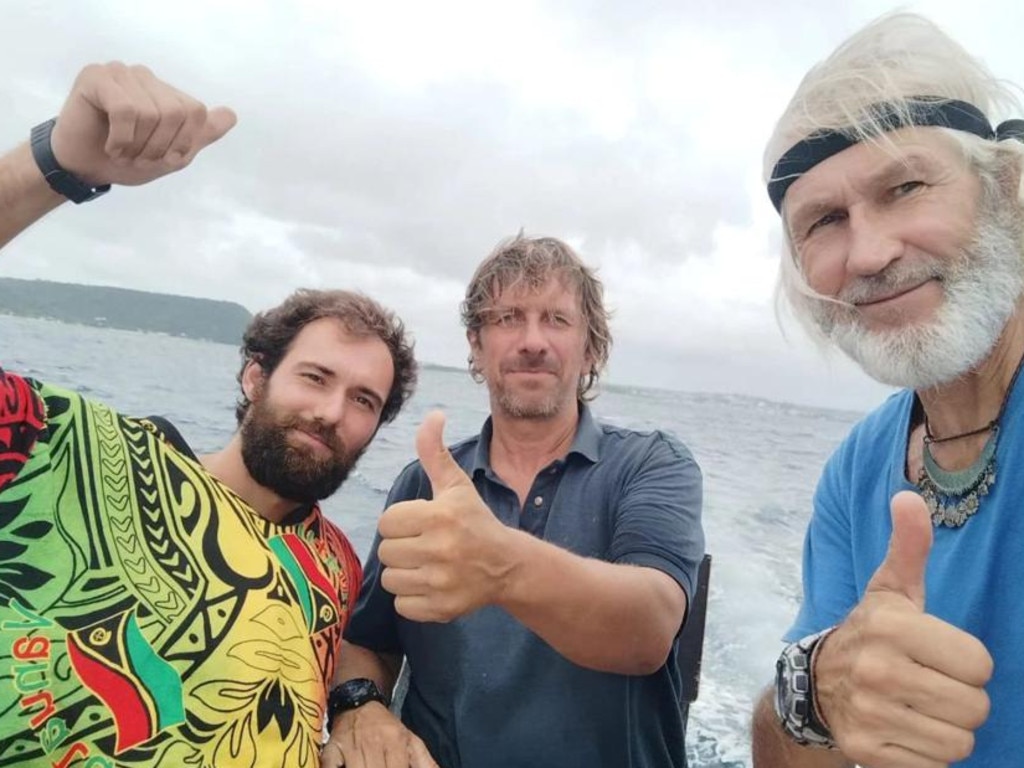
It is believed the boat was attacked by a school of small cookie cutter sharks, typically just 15 to 50cm in length, known to target boats and inanimate* objects.
Images captured by AMSA show the catamaran taking on water in the Coral Sea as rescue efforts began.
AMSA Response Centre duty manager Joe Zeller said it was “extraordinarily* lucky” the Dugong Ace was so close.
“The ocean is just so vast,” he said. “It is very rare to have a vessel of opportunity so close during the time of distress, particularly in the open ocean like that.
“Their boat was inoperable* (and) the sailors reported to us that shark attacks had removed large sections of their vessel.
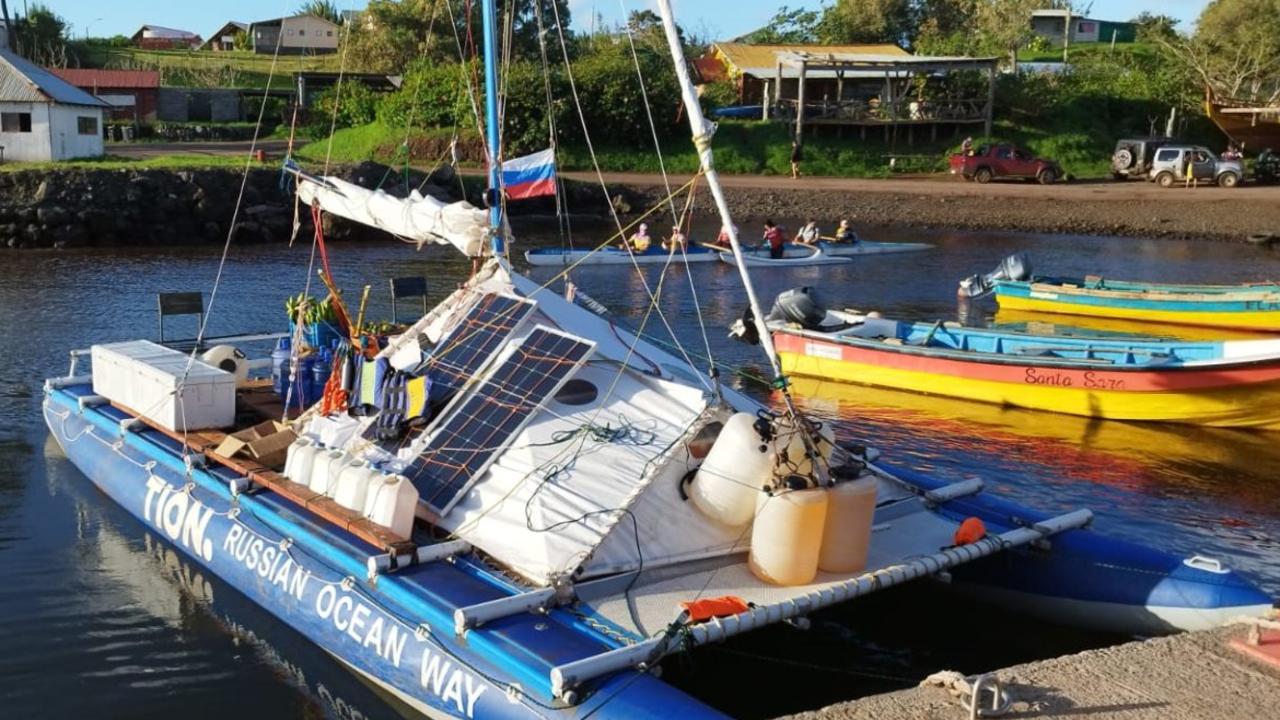
“We would certainly like to convey our thanks to the master and crew of the Dugong Ace who, in the finest tradition of seafarers*, have come to the rescue of three sailors in need,” Mr Zeller said. “The joy of search and rescue is that it does transcend* geopolitics*.”
The sailors were retracing* the around-the-world voyages of Russian explorers in the 19th century.
POLL
GLOSSARY
- inflatable: a boat or similar that must be filled with air to be able to float on the water
- catamaran: a sailing boat that has two side-by-side hulls
- detected: picked up, noticed, discovered
- maritime: relating to the sea, especially when humans are involved
- deflating: releasing or letting out the air or gas in something
- rudder: underwater wooden or metal blade at the back of a boat used for steering a boat
- hull: the body or frame of a ship, most of which goes under the water
- nautical: relating to sailing, sailor, navigation or ships
- catastrophe: disaster, crisis, calamity, a sudden event that causes great damage
- destiny: the inevitable or certain future of a person or thing
- extraordinarily: unusually, remarkably, especially, more so than would commonly be the case
- inoperable: not working, not in service, not able to be used
- seafarers: people who travel by sea, sailors
- transcend: go beyond, surpass, extend past a known limit
- geopolitics: the meeting of geography, politics and international relations
- retracing: going back over a path or series of past actions
EXTRA READING
Fishermen help free shark in need
Hammerhead shark nursery discovered
Orca duo kills 17 sharks in one day
QUICK QUIZ
- What species of shark damaged the boat?
- How far from Cairns was the Tion when the school of sharks attacked?
- What was the name of the carrier that came to their rescue?
- What was the purpose of the Russian sailors’ voyage?
- Mr Kovalevsky said he had heard about which animals being found in Australia?
LISTEN TO THIS STORY
CLASSROOM ACTIVITIES
1. Shark-proof vessel
Sailing around the world on an inflatable catamaran is risky business!
These small but mighty little sharks have done quite a bit of damage to this boat in a short amount of time.
What could the sailors add to the design of their boat to ensure it is cookie cutter shark-proof, as well as safe from other things?
Sketch your design and outline what you’ve added below:
Time: allow 20 minutes to complete this activity
Curriculum Links: English, Design and Technologies, Critical and Creative Thinking
2. Extension
Cookie cutter sharks didn’t seem to be on the list of dangers for the French and Russian sailors.
What do you think would be the main risks of circumnavigating the globe in an inflatable catamaran?
–
–
–
–
–
Time: allow 10 minutes to complete this activity
Curriculum Links: English, Personal and Social, Critical and Creative Thinking
VCOP ACTIVITY
Read this!
A headline on an article – or a title on your text – should capture the attention of the audience, telling them to read this now. So choosing the perfect words for a headline or title is very important.
Create three new headlines for the events that took place in this article. Remember, what you write and how you write it will set the pace for the whole text, so make sure it matches.
Read out your headlines to a partner and discuss what the article will be about based on the headline you created. Discuss the tone and mood you set in just your few, short words. Does it do the article justice? Will it capture the audience’s attention the way you hoped? Would you want to read more?
Consider how a headline or title is similar to using short, sharp sentences throughout your text. They can be just as important as complex ones. Go through the last text you wrote and highlight any short, sharp sentences that capture the audience.

